How To Prepare For Devon
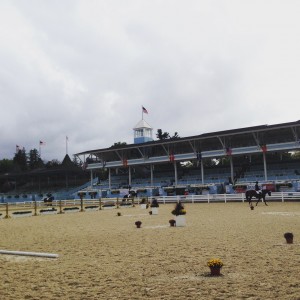 THREE MONTHS BEFORE: Natasha, one of your assistant trainers, asks if she can join her family on a vacation for a chunk of time that includes Dressage at Devon. It’s not great timing, but you’re well staffed at home, so missing one person won’t be a disaster.
THREE MONTHS BEFORE: Natasha, one of your assistant trainers, asks if she can join her family on a vacation for a chunk of time that includes Dressage at Devon. It’s not great timing, but you’re well staffed at home, so missing one person won’t be a disaster.
TEN DAYS BEFORE: One of your working students decides to quit and, having apparently been raised by wolves, also decides that you’re not owed the courtesy of two weeks’ notice, and she’s leaving the day before you head to PA. That leaves you with three people to care for 17 horses. (The response of those three people, by the way? “No problem. We got this.” Love them.)
THE SUNDAY BEFORE: Get a phone call from the man in your life, where he tells you that he’s running a 102* fever and feels like he’s been hit by a bus. Take everything with zinc in it in your medicine cabinet.
TWO WEEKS BEFORE: Out of curiosity, when was the last time you practiced the Grand Prix Special? (June, 2015). Do you know the Grand Prix Special? (Nope.)
Read the rest at The Chronicle of the Horse!
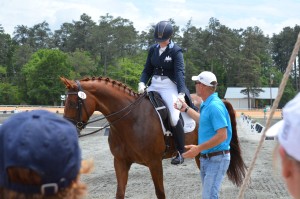 My coach, Michael Barisone, is a Big Deal Guy.
My coach, Michael Barisone, is a Big Deal Guy.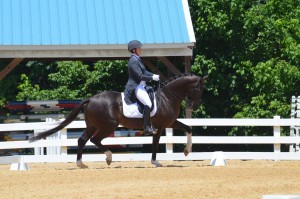 For all intents and purposes, there’s three reasons I show a horse. One is to win, or at least to do as well as I possibly can. This is the end goal, when I’m ready, when the horse is ready, when we together as a pair have the experience to do what I want to do, and an end game in mind. The second is to increase the value of the horse—horses need competition scores to prove their worth, or for sport predicates or breeding achievements. And the third is to help a horse (or me!) gain experience. I take my baby horses to shows as kids not because I’m expecting to be World Champion of Training Level, but to give them a taste of their future. And I take them out later, when they’re more finished but not yet Finished, so that I know what they’re like to ride in the ring as adults.
For all intents and purposes, there’s three reasons I show a horse. One is to win, or at least to do as well as I possibly can. This is the end goal, when I’m ready, when the horse is ready, when we together as a pair have the experience to do what I want to do, and an end game in mind. The second is to increase the value of the horse—horses need competition scores to prove their worth, or for sport predicates or breeding achievements. And the third is to help a horse (or me!) gain experience. I take my baby horses to shows as kids not because I’m expecting to be World Champion of Training Level, but to give them a taste of their future. And I take them out later, when they’re more finished but not yet Finished, so that I know what they’re like to ride in the ring as adults.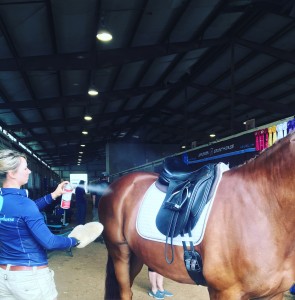 A lot goes into a winning competition ride. Years of great training for the horse and for the rider; smart preparation leading up to the show, including conditioning and fitness work; tack and equipment that helps both horse and human perform their best; and a great strategy to manage two brains—and lots of emotions—on the day.
A lot goes into a winning competition ride. Years of great training for the horse and for the rider; smart preparation leading up to the show, including conditioning and fitness work; tack and equipment that helps both horse and human perform their best; and a great strategy to manage two brains—and lots of emotions—on the day.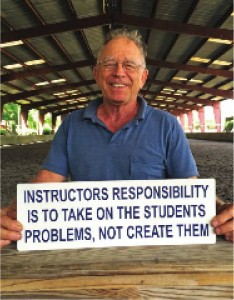 With the official naming of my wonderful, brilliant friend Ali Brock to the U.S. Olympic Dressage Team for the Rio Games (along with Steffen Peters, Laura Graves and Kasey Perry-Glass), our mutual coach, Michael Barisone, joins a very small club: Olympians themselves who’ve coached a rider to the Olympics as well. It’s a huge achievement, and I’m just bursting with joy for Ali, Michael, and the rest of the wonderful folks involved in this exceptional team.
With the official naming of my wonderful, brilliant friend Ali Brock to the U.S. Olympic Dressage Team for the Rio Games (along with Steffen Peters, Laura Graves and Kasey Perry-Glass), our mutual coach, Michael Barisone, joins a very small club: Olympians themselves who’ve coached a rider to the Olympics as well. It’s a huge achievement, and I’m just bursting with joy for Ali, Michael, and the rest of the wonderful folks involved in this exceptional team.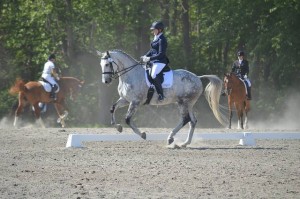 I’ve been on the road for several consecutive weeks, between clinics and horse shows and the general chaos of spring and summer, and I love it, truly. If I didn’t, this would have burned me out long ago. But I’m staring down two—TWO!—consecutive weekends at home with not much on my dance card except the normal things, and I’m quite excited. But that’s why you haven’t heard much from me.
I’ve been on the road for several consecutive weeks, between clinics and horse shows and the general chaos of spring and summer, and I love it, truly. If I didn’t, this would have burned me out long ago. But I’m staring down two—TWO!—consecutive weekends at home with not much on my dance card except the normal things, and I’m quite excited. But that’s why you haven’t heard much from me.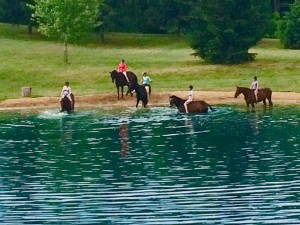 At the end of the day, dressage competition is done in a 20×60 arena, with perfectly manicured footing, and as such that’s where we spend a fair amount of our training time. But staying within the confines of the Little White Box is a great way to make a rider crazy, and forget what it does to the horse, a creature evolved from wandering grazers, although admittedly every time one of my fancy Dutch things goes catapulting through the air because he’s spotted a leaf or a bird, I am reminded of how much smart the domestication process has apparently taken out.
At the end of the day, dressage competition is done in a 20×60 arena, with perfectly manicured footing, and as such that’s where we spend a fair amount of our training time. But staying within the confines of the Little White Box is a great way to make a rider crazy, and forget what it does to the horse, a creature evolved from wandering grazers, although admittedly every time one of my fancy Dutch things goes catapulting through the air because he’s spotted a leaf or a bird, I am reminded of how much smart the domestication process has apparently taken out.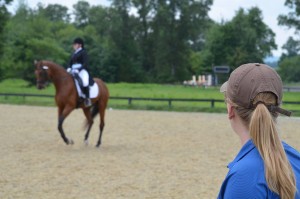 Some of them have been in my program for years, and some are new. Some are on horses who we’ve helped bring up the levels from the beginning of their dressage careers, and some are on horses that were already schooled to the middle levels when we met, but all are horses who we’re finishing to the level, which is pretty fun. They are the six students of mine in pursuit of their USDF Silver Medals this year, or, as I like to call them, the Prix St. Georges Club of 2016.
Some of them have been in my program for years, and some are new. Some are on horses who we’ve helped bring up the levels from the beginning of their dressage careers, and some are on horses that were already schooled to the middle levels when we met, but all are horses who we’re finishing to the level, which is pretty fun. They are the six students of mine in pursuit of their USDF Silver Medals this year, or, as I like to call them, the Prix St. Georges Club of 2016.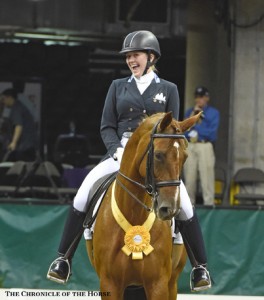 I tell my clients, and my friends, and my fellow riders, the same thing, a hundred times a day: horses figure “it” out, whatever “it” is, exactly when they are ready to do so, and not a minute sooner, and there’s nothing to do except calmly and coolly soldier on until they get it.
I tell my clients, and my friends, and my fellow riders, the same thing, a hundred times a day: horses figure “it” out, whatever “it” is, exactly when they are ready to do so, and not a minute sooner, and there’s nothing to do except calmly and coolly soldier on until they get it.